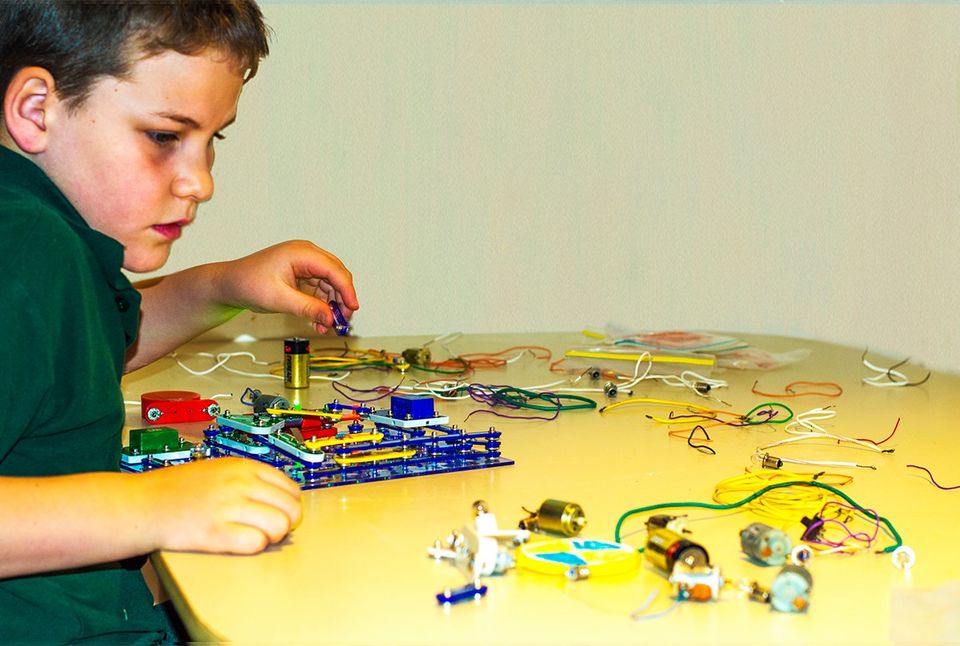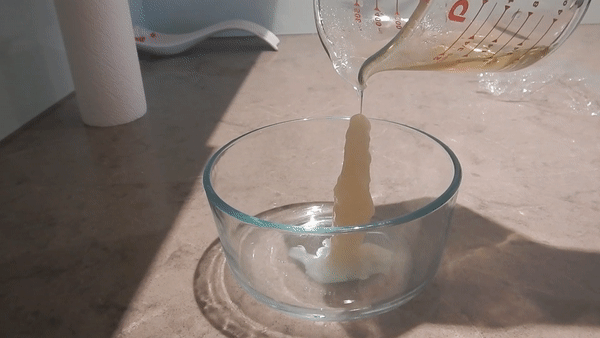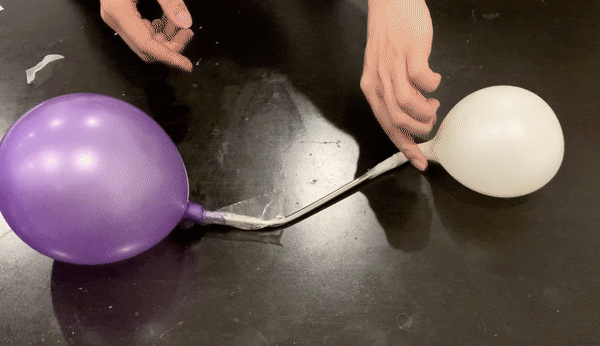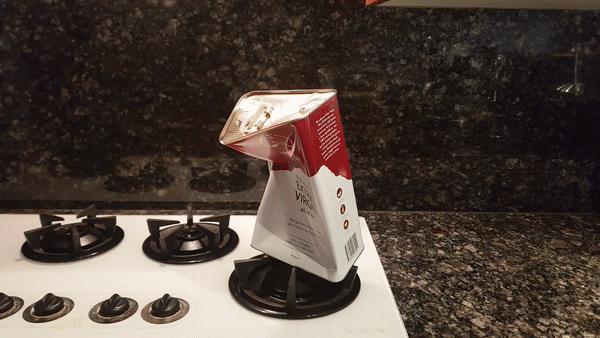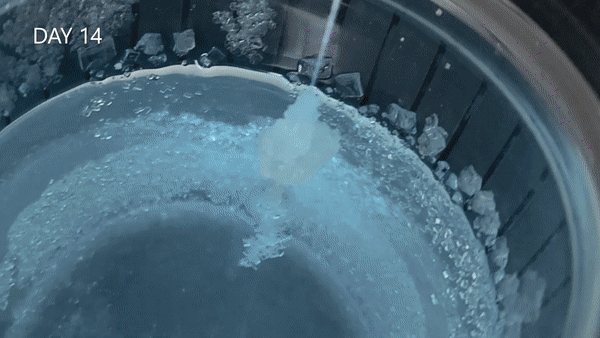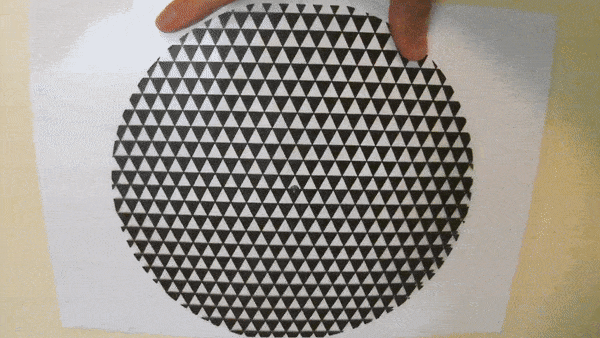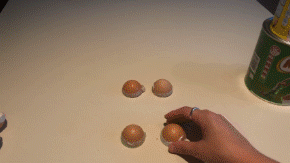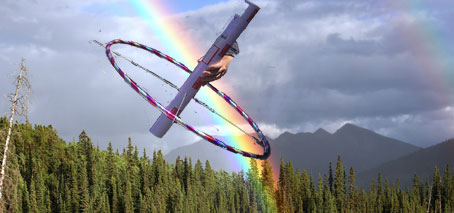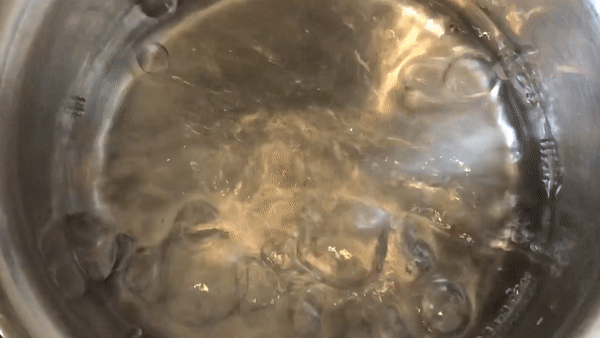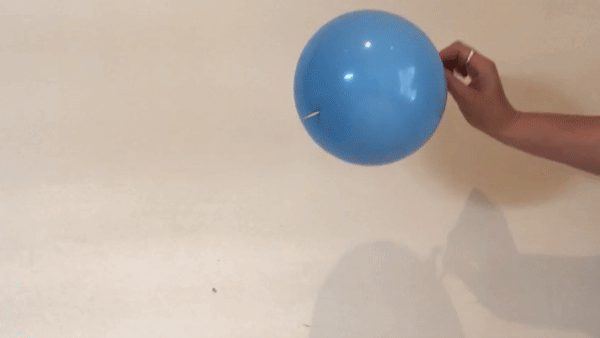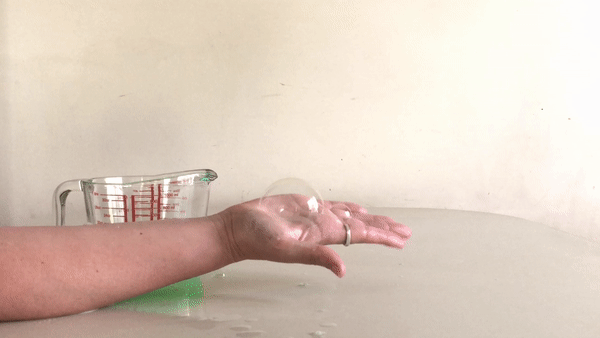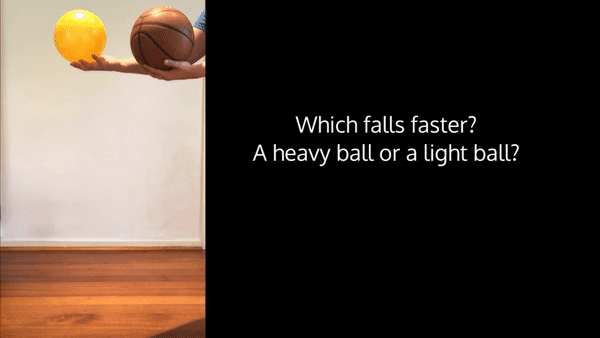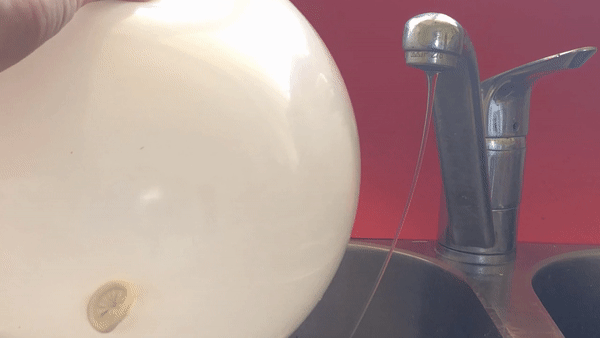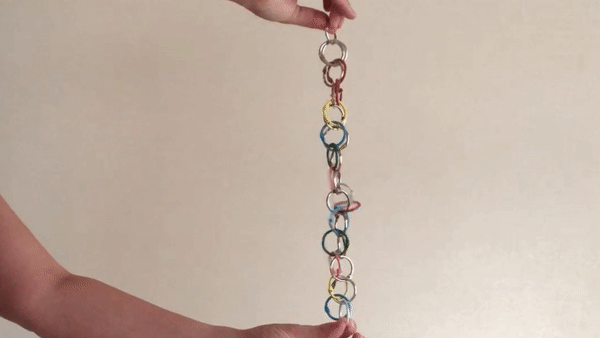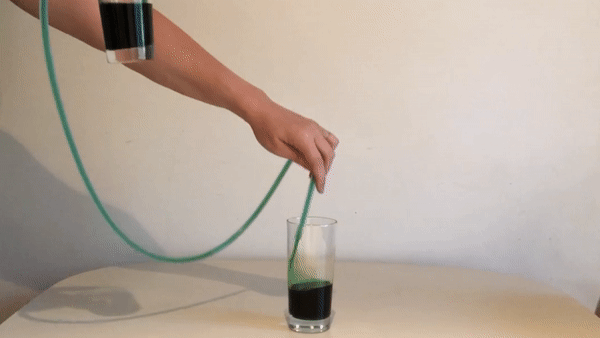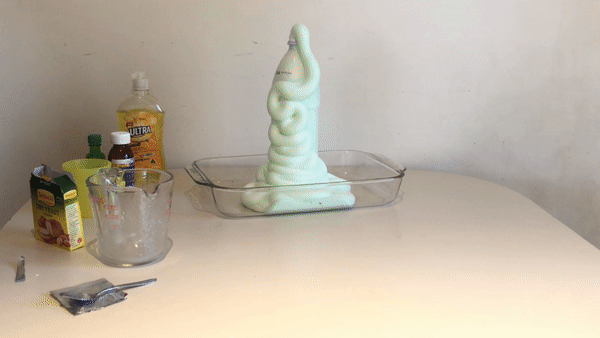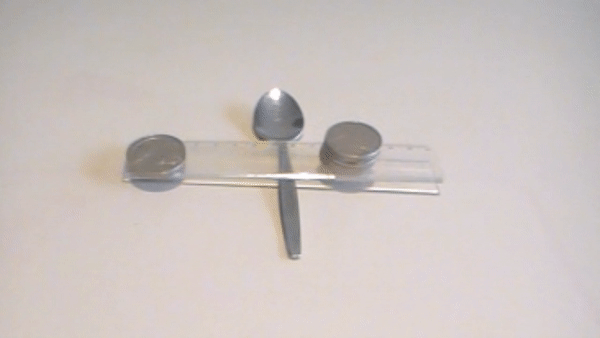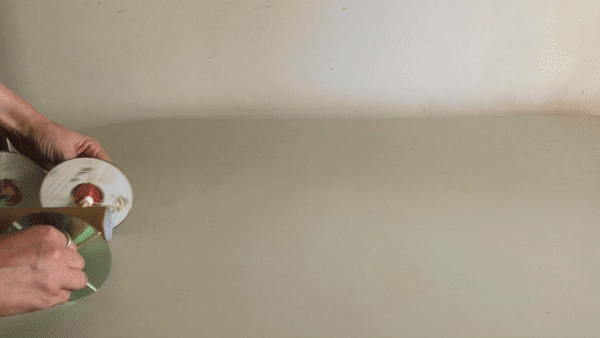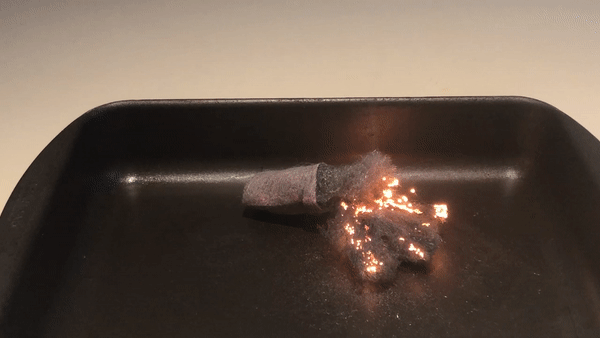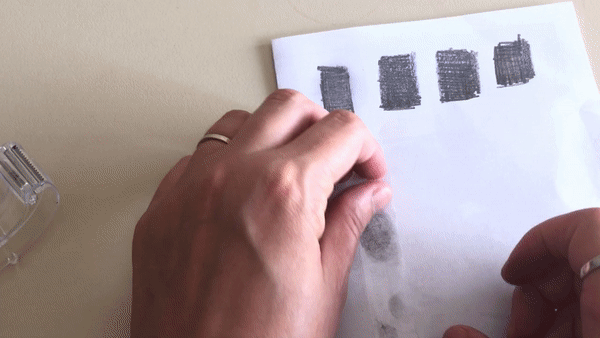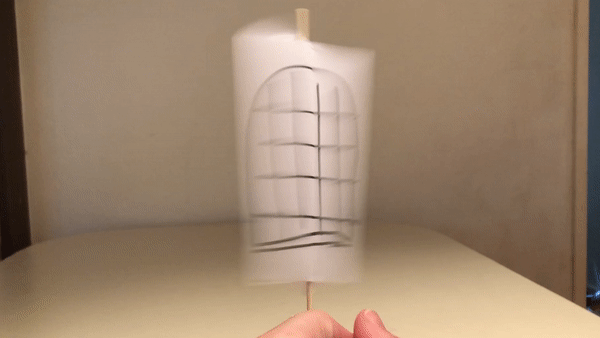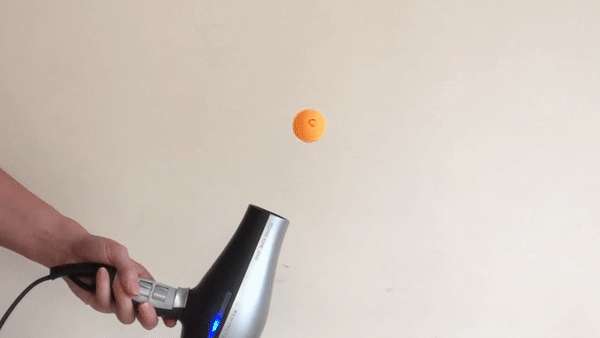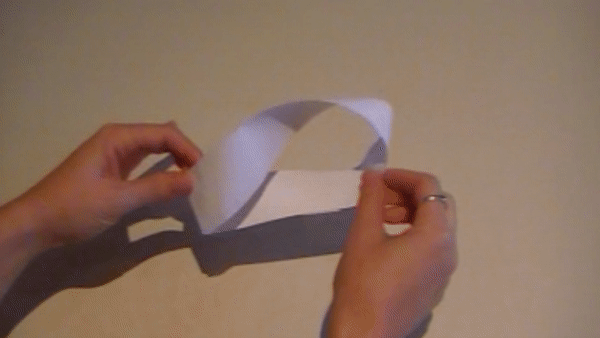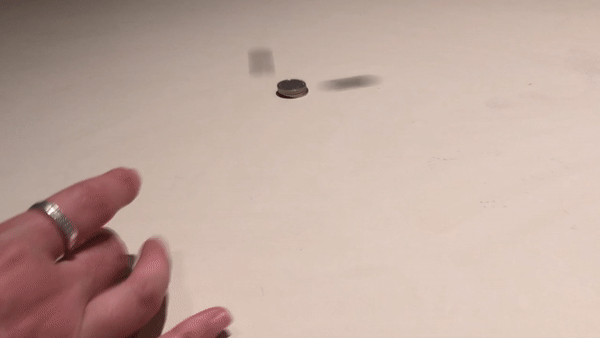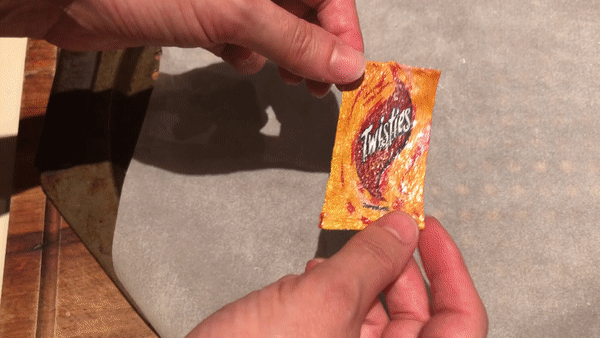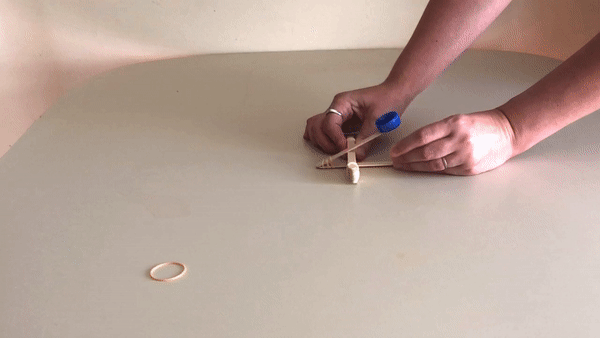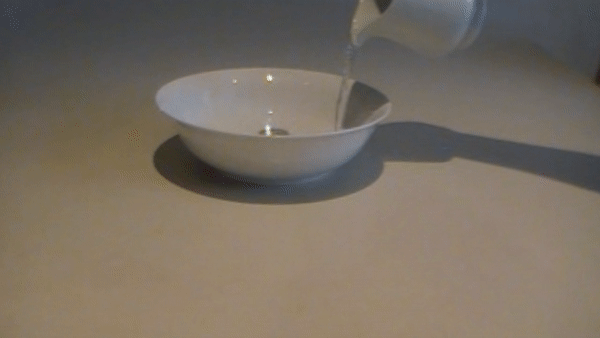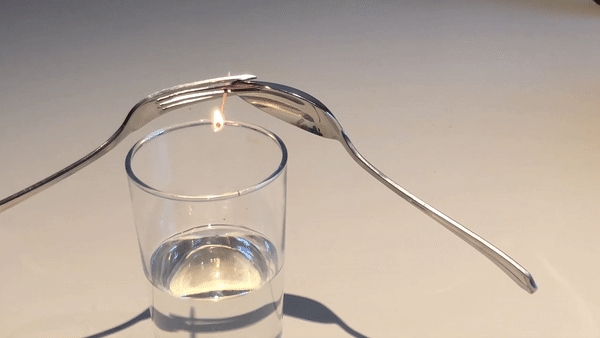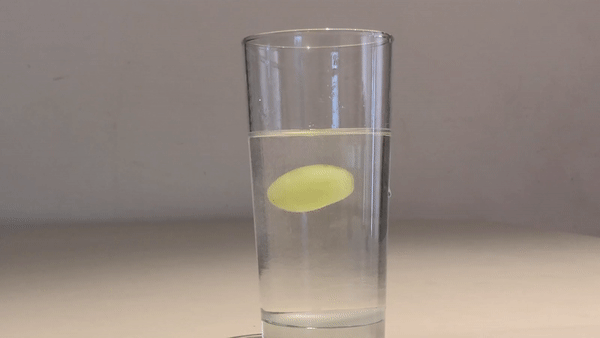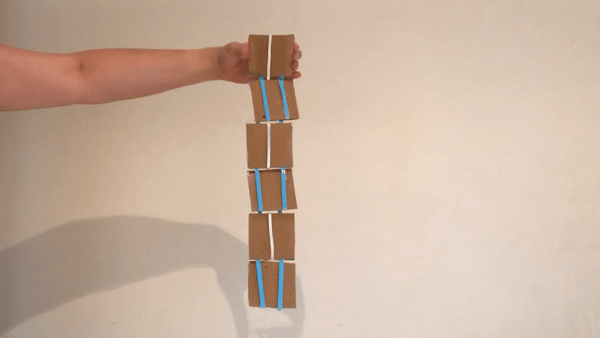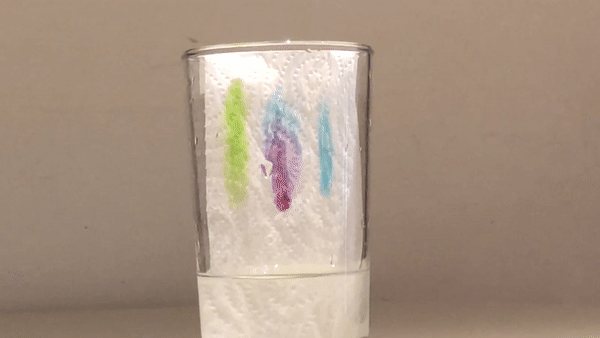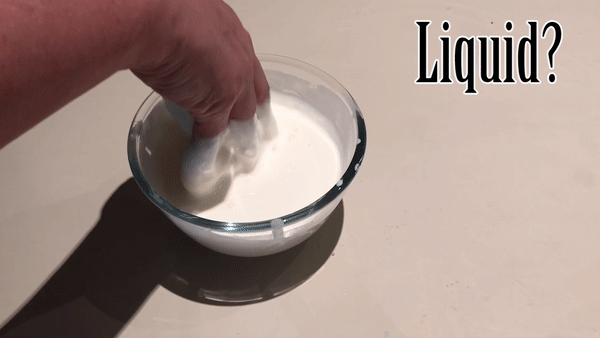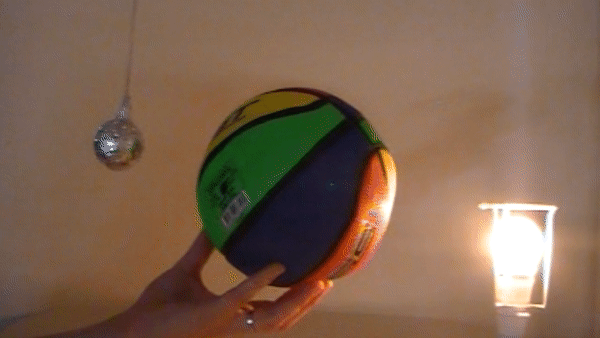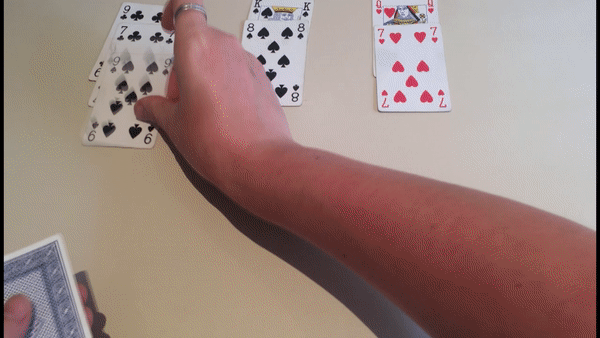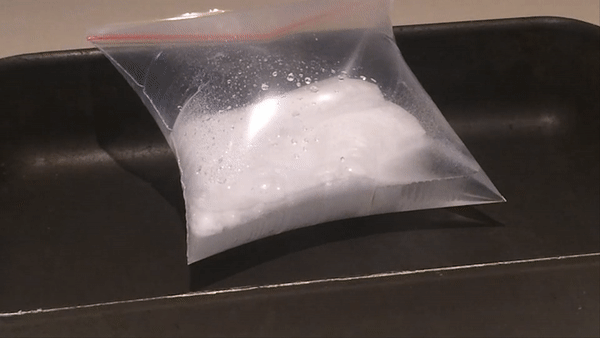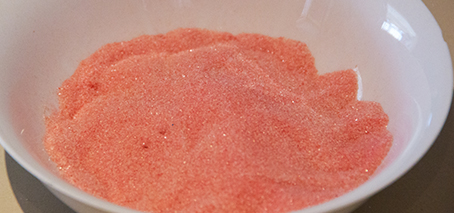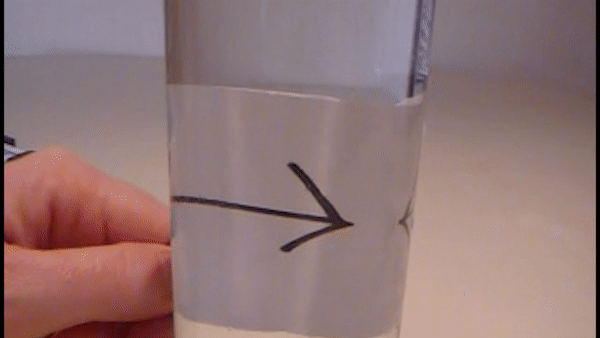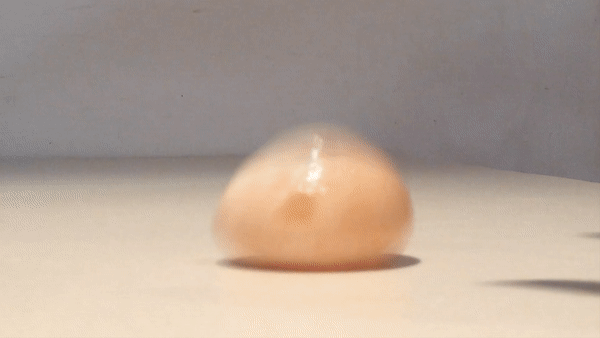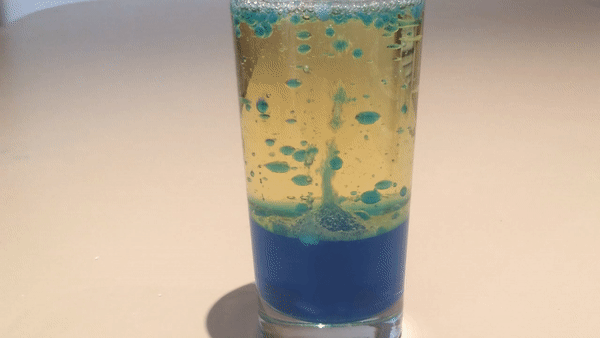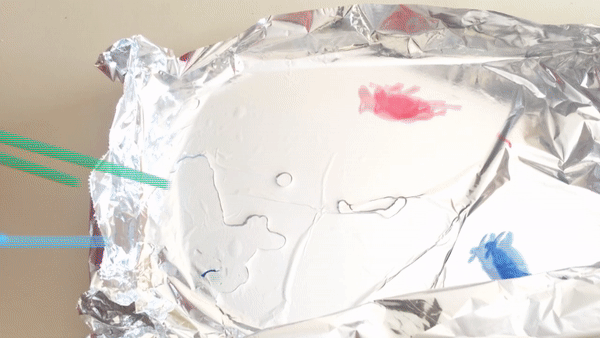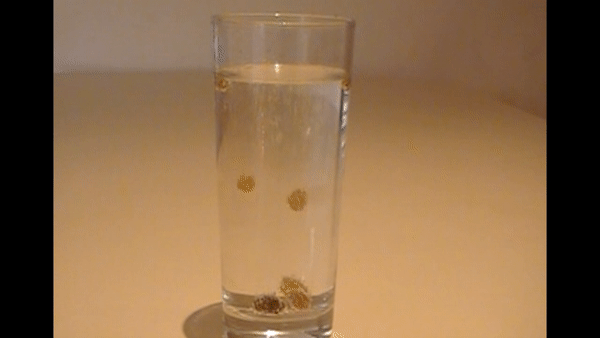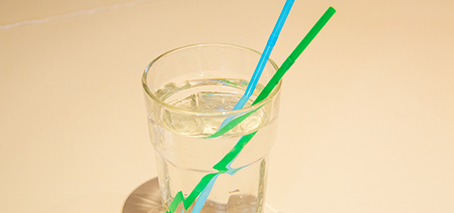Forces and energy: Electricity and sustainable energy
Forces and energy: Kinetic, potential, conservation and transformation
Forces and Energy: Energy and Work
Home Science: Activities with teacher resources
Why were flights cancelled in Phoenix Arizona?
Electricity and magnetism: electromagnetism
Understanding electricity
Reflection, absorption, refraction, diffraction. The basics
FLEET Schools Home Science: Conductors and insulators
FLEET Schools Home science: Light and optics
FLEET School Home Science: Forces and motion
FLEET Schools Home science: Energy
FLEET Schools Home science: Electromagnetic energy
FLEET Schools Home science: Physics at random
Does a soft drink can weigh more, less or the same after it is opened?
FLEET Schools
Hot Ice
This can be a bit of a tricky experiment, but when it works, it’s fantastic! Combine vinegar and baking soda to make ‘hot ice’. Warning: boiling water involved #adultsupervision What you need: Vinegar, baking soda, saucepan, jug, bowl What to do: Put 4 cups (1 L) of white vinegar into a saucepan. Then slowly add 3 tablespoons (60 mL) of …
Two balloons
A sometimes-counterintuitive experiment, demonstrating the equalising of air pressure in two connected balloons What you need: balloons, straw, sticky tape, peg or something to block off the straw What you do: Blow up one balloon so it is quite large Place the straw in the end of the balloon and secure it with tape. Block off the end of the …
Egg in a Jar
‘Suck’ an egg inside a narrow-necked bottle or jar: a seemingly ‘magic’ trick, accomplished via changing the air pressure inside the bottle. What you need: Egg, bottle with opening slightly smaller than an egg, small piece of paper, matches or lighter What to do: 1. Boil the egg for 8-10 minutes so that it is hard boiled.2. Peel the egg (let it cool first!).3. (Optional) …
Teabag rocket
Ignite a paper teabag to launch a rocket upwards (adult supervision). What you need: Tea bag, scissors, matches What to do: 1. Remove the staple from the tea bag and pour out the tea. 2. Straighten out the bag and smooth it out so it forms a cylinder that can stand up on its end. 3. Stand the tea bag …
Matchhead rocket
Create a simple but powerful match-head rocket, demonstrating Newton’s third law of motion. Caution: matches! Fire! Eyes! Adult supervision definitely needed for this one. What you need: Wooden matches, aluminium foil, paper towel, wooden skewers, needle-nose pliers and wire cutters, tape (duct tape or electrical tape) What to do: To cut out the shape from the aluminium foil: Place a …
Crushing Can
Stalactites
Take a shortcut on the thousands of years needed for limestone stalactites and stalagmites to form in cave, forming salt stalactites in a matter of days. What you need: Epsom salt or rock salt, string, water, glasses, paperclips, saucepan What to do: In a saucepan, dissolve as much salt in hot water as you can by stirring over heat. Place …
Salt Crystals
Growing salt crystals in the home What you need: Rock salt, string, glass, water, pencil, saucepan, food dye What to do: Pour 500mL of water into a saucepan and add rock salt. Stir to dissolve. Add as much salt as you can until it stops dissolving. Tie a salt crystal to some string, allowing the string to dangle down, and …
Shapes and Patterns & the next big thing in physics: moiré pattern and twistronics
Animation on Paper
Want to create a high tech version of a flip book? Use patterns to create a hard copy of an animation. What you need: a printout of a specific image – an image of an atom can be downloaded here a printout of the lined pattern (download here) on a transparency What to do: Print out the attached images, with …
Egg Shell Strength
Egg shells are fairly weak, right? They crack very easily. So how much weight do you think they could actually hold? What you’ll need: at least two eggs masking tape scissors large hard cover book or piece of cardboard some heavy objects, eg. cans What to do: Wrap masking tape around the middle of the egg. Use the scissors to …
How to find a rainbow
Why are there so many songs about rainbows? And how to locate one with a bit of simple physics, maths and home-craft Maunder and Hunt’s Very Fabulous Rainbow Position Locator* There’s something quite fascinating about rainbows, which is why they feature in so many wonderful legends and myths, from the Bifrost bridge of Norse legend, to God’s reassuring post-Flood sign, …
Boiling Ice
A simple experiment to demonstrate thermodynamics! (adult supervision required) What you need: a pot of boiling water ice What to do: Put the pot of water on to boil. When it is boiling, there will be lots of steam and bubbles. Put ice into the water. What happens: You will notice that the water stops boiling, almost instantly. When the …
Holey Balloon
A little bit of science magic. What happens when you push a skewer all the way through a balloon? It pops, right? Not necessarily. What you need: balloon wooden skewer vegetable oil What to do: Stretch out a balloon and then blow it up until it is quite big. Then let some air out until it is about two-thirds its …
Catching Bubbles
Playing with bubbles can be a bit of fun. But what if you could make it so that the bubbles didn’t pop when you caught them? What you need: water dishwashing liquid glycerine a straw What to do: Mix approximately 200 mL of water with a teaspoon of glycerine. Stir well. Add approximately 2 tablespoons of dishwashing liquid. Mix gently. …
Falling Objects
If you drop objects that weigh different amounts, which will hit the ground first? What you need: balls that weigh different amounts, eg. basketball, tennis ball paper What to do: If you have two balls that are the same, drop them from the same height at the same time. They should hit the ground together (or at slightly different times …
Cup Bridge
Challenge someone: you have four cups and three knives. Three of the cups are in a triangle, too far apart for the knives to reach. You need to build a bridge to support the weight of the fourth cup. What you need: 4x cups 3x knives What to do: Place a knife from one cup pointing to the centre of …
Coke vs Diet Coke
If you have a can of Coke and Diet Coke, they are the same size – it says so right on the cans. But we observe a difference very easily. What you need: can of Coke can of Diet Coke large container of water, deeper than the height of the cans What to do: Place the can of Coke into …
Water Bender
You can be a water bender. All you need is a balloon (and a good head of hair). Download pdf of Water Bender activity Learning Intentions Students get to think, observe and learn about the difference between insulators and conductors and how charged particles (electrons and protons) function to generate static electricity. Materials A dry latex balloon (if you don’t …
Falling Rings
Create something out of keyrings that appears to be a magic trick What you need: at least 24 keyrings, preferably 12 of one colour and 12 of another colour (or coloured). You can purchase coloured and silver keyrings at Officeworks. What to do: Join all the coloured keyrings together in a line. Hold the coloured rings up by the end …
Balloon vs Fire
If you hold a flame to a balloon, can you prevent it from exploding? What you need: balloon water matches What to do: Pour some water into an uninflated balloon until it is almost full. Blow up the balloon, but keep it fairly small. Tie the balloon at the end. Hold the balloon up so that the tie is at …
Supertaster
Test (and trick) your tastebuds, looking at the relationship between taste and smell. What you need: black peppercorns What to do: Tightly hold your nose. Put a peppercorn in your mouth. Bite the peppercorn between your teeth. What do you taste? Now let go of your nose. What do you taste now? What happens: When you hold your nose, you …
Siphoning Water
What you need: tube or hose 2x glasses What to do: Fill one of the glasses with water. You can add some food colouring to make the water easier to see if you like. Use the tube or hose like a straw and suck up some water from the full glass (but don’t think it). When the water gets to …
Elephant Toothpaste
Create a chemical reaction that looks like very, very large toothpaste! What you need: 6% hydrogen peroxide – you can purchase this from a chemist, not the supermarket yeast powder warm water empty soft drink bottle dishwashing liquid food colouring (optional) rubber gloves safety glasses funnel or jug What to do: Put on the safety glasses and gloves. Pour 100mL …
Double Bounce
Musical Glasses
Make some music with glasses of water and a spoon. What are the different sounds you can make? What you need: several glasses spoon What to do: Put different amounts of water in each glass. For example, have one glass almost full, one glass half full, one glass almost empty, etc. Use the spoon to tap on the glasses, one …
Red Cabbage Indicator
Something colourful with kitchen items that can be used to show how acidic (or basic) something is. What you need: red cabbage water blender food or chemicals to test for acidity, eg. lemon juice, vinegar, shampoo, household cleaner, tomato, egg white What to do: Put three or four red cabbage leaves into a blender. Fill it to half way with …
Balancing See-Saw
Use household items to demonstrate the science behind see-saws What you need: teaspoon tape small ruler coins What to do: Balance the ruler on the spoon by placing it in the centre. Add a piece of tape to keep it in the right place. Add a stack of coins (the same number of coins) to each end of the ruler. …
Coloured Light
What colour do you get when you combine red, green and blue light? What you need: 3x torches 3x rubber bands red, green and blue cellophane a dark room What to do: Put each of the colours of cellophane over each of the torches and secure it them with rubber bands. Turn out the lights and shine each of the …
Day and Night
Demonstrate why we experience day and night using a ball and a lamp. What you need: lamp/torch ball What to do: Turn the lamp on and hold the ball up so the light is shining onto one side. Rotate the ball, imaging it is Earth rotating. Pick a unique spot on the ball and imagine it is Australia. Notice how …
Rubberband car
Use household materials to create a car that can actually go. What you need: paper towel tube metal skewer 2x wooden skewers scissors 4x old CDs glue 4x wooden spools 4x buttons or small pieces of card/paper ~15x rubberbands 2x straws paperclip What to do: Use the metal skewer to put a hole through the paper towel tube close to …
Electrified Steel Wool
This is a simple experiment that creates a circuit with steel wool and shows the fiery potential of resistance. The steel wool does actually catch fire so make sure you do it safely. Download activity as a pdf Learning intentions Students get to generate inquiry questions about electrical circuits. The activity will help students recognize the need for a complete …
Fingerprinting
Examine your fingerprints using every day items. What shapes can you see in your fingerprints? What you need: white paper sticky tape pencil magnifying glass (optional) What to do: Colour squares on a piece of paper using a grey lead pencil. These should be larger than your finger. Rub the tip on your finger in the pencil colourings until your …
Bird in a Cage Illusion
Create a visual illusion where a bird drawn on one side of some paper, and a cage drawn on the other, appear as though the bird is in the cage. What you need: 2x notecards coloured markers skewer/pencil/stick sticky tape What to do: On one card, draw a bird in the middle of the card. On the other card, draw …
Strength Challenge
How strong do you think you are? Are you stronger than two people? Three? Four? Here is a trick you can do to show people how “strong” you are. What you need: a wall several people (one at least needs to have weaker arms than you) What to do: Tell everyone how strong you are. Say that you are stronger …
Walking Colours
Use science (and a bit of food colouring) to make a beautiful rainbow by “walking” colours between glasses. What you need: at least 3 glasses or jars, 5 glasses is better but you could also use 7 – it is best to use small glasses/jars red, yellow and blue food colouring paper towel water What to do: Put your glasses …
Rope Climber
Use craft and a bit of science to create a puppet that can climb a rope What you need: string scissors cardboard sticky tape coloured paper or markers (optional) split pin (optional) What to do: Cut out legs and torso + head shape from the cardboard. Decorate these using the coloured paper or markers (optional). Put a hole in the …
Under pressure: Heat, airplanes and Bernouli
What does heat and a dude called Bernouli have to do with deciding when it is too dangerous to fly a plane? Be prepared to do some quiz questions. The experiments in this activity relate to what enables a plane to get off the ground and what can make it come crashing down again. And about 150 years before the …
Möbius strip – a one-sided object in 3D
Create an object that only has one side – known as a Möbius strip. What you need: a long strip of paper sticky tape scissors pen/marker What to do: Take the strip of paper and bend the ends together. Twist one of the ends over 180 degrees, and stick the ends together. You have now created a Möbius strip. To …
Boat Racers
Use bread bag ties to create boats that race along the surface of water without even touching them. What you need: shallow dish, square or rectangular water bread bag clips food dye (optional) dishwashing liquid cotton tips What to do: Pour the water into the dish so it covers the bottom of the dish. Place bread bag clips at one …
Coin Shooter
Create a tower using coins, and then bring your tower down by shooting out one layer at a time. What you need: as many 10 cent coins as possible patience! What to do: Put all the coins except one into a tower. Use the remaining coin, the shooter, by flicking or throwing it as fast as possible towards the tower. …
Shrinking Chip Packet
Make a miniature version of a chip packet. You could make this into a keyring to hang on a school bag. What you need: 2x baking trays baking paper chip packet What to do: Wash the empty chip packet with dishwashing liquid and water. Dry it thoroughly. If you want to make a keyring, put a hole in the top …
Catapult
Make a simple catapult that can fire small items across rooms. Students can invent games to play and experiment with their catapults and test their understanding of potential and kinetic energy. Learning Intentions Students will use the scientific process identify and understand potential and kinetic energy, their use to do work and how energy can be transferred from one form …
Honeycomb
Some kitchen science with a tasty treat at the end! What you need: water sugar honey bicarb soda What to do: Put 2 tablespoons of water, 2 tablespoons of honey and 3/4 cup sugar in a saucepan. Put it on a high heat, but do not stir it. Let it boil. Once it starts to turn golden-brown, remove from heat. …
Holey Bag
A bit of science magic – why doesn’t a holey bag leak? What you need: zip lock bag pencils water a dish to catch any accidental spills What to do: Put some water in a zip lock bag and close it tightly. Hold the bag above a dish. Gently push a pencil through the bag, where there is water. You …
Spinning Eggs
What you need: a hard boiled egg a raw egg a hard surface What to do: Spin the hard boiled egg. Then spin the raw egg. Notice the speed at which they spin and which one stops first. Spin the hard boiled egg – once it is moving, touch it to make it stop spinning. Now spin the raw egg …
Appearing Coin
Use the science of refraction to make a coin suddenly appear. Download the pdf of complete activity that includes worksheet tables. Learning Intentions The activity investigates refraction and its applications in the real world. By the end of this activity, students should be able to: draw a diagram to show how the light coming from the coin changes direction (refracts) …
Magic Floating Cutlery
Perform a magic trick using science! Balance a fork and a spoon on the edge of a toothpick, with the other end of the toothpick just touching the rim of a glass. What you need: a fork and a spoon (or two forks) a toothpick matches glass half full of water What to do: The glass needs to have some …
Coloured Words Challenge
This week we use a bit of psychology to issue a challenge – can you say the colour of the text, rather than reading the word? What you need: sheet with words written in different colours – print here. stopwatch or timer What to do: Issue someone the challenge – how fast can you say the colour of each word? …
Hovering Grape
Create some science magic with a grape hovering in the middle of a glass of water. What you need: glass of water sugar spoon grape What to do: Put a grape in a glass of water. It should sink. Add sugar to the water and stir to dissolve the sugar. If the grape sinks, continue to add sugar, stirring the …
Falling Blocks Illusion – Jacob’s Ladder
This demo is a model of a toy, Jacob’s ladder, that presents as a type of illusion. What you need: cardboard scissors sticky tape or glue pen/pencil ruler 2x ribbon What to do: Measure and cut out 12 squares of cardboard with 7.5 cm sides. Measure and cut 110 cm lengths of ribbon. You will need 1x length of one …
Kitchen Extinguisher
Try putting out a candle by making your own fire extinguisher using things you find in the kitchen. What you need: cup/glass vinegar bicarb soda something to cover the top of the glass, eg. a notecard candle What to do: Light the candle. Put 1-2 teaspoons of bicarb soda into your glass. Pour about 1/2 cup of vinegar into your …
Marker Pen Chromatography
Examine what makes up some colours in coloured markers. What you need: a tall glass, about one-third full with water paper towel or coffee filter paper different coloured textas or markers (non-permanent) What to do: Get a long strip of paper towel. Put several dots of different coloured markers in a row about half way up the paper towel. Bend …
Punching Corn Flour
Is it a liquid? Is it a solid? It is possible for it to be both? What you need: corn flour water large bowl What to do: Put 2 cups of corn flour in a bowl. Add 1 cup of water. Use your hands to mix together. It will be sticky. Dip your fingers in slowly and pull them out, …
Phases of the Moon
Use household items to visualise and explain why we see the moon as different shapes. What you need: a light/torch a ball a smaller ball aluminium foil (optional) stick or string (optional) What to do: Cover the smaller ball in aluminium foil and put it on a string or stick (optional) – this is your moon. Turn the light on …
Sinking Oranges
Did you know that whether something floats is not about how much it weighs. We can investigate this using oranges. What you need: 2 oranges large bowl of water What to do: Put one orange into the water. Does it float or sink? Remove the peel on the second orange. Add it to the water. Does it float or sink? …
Electric Motors: Spinning Wire
The spinning wire experiment is actually an experiment that creates a simple motor, known as a homopolar motor, with the use of just three things. Download pdf of activity, that include samples table to record student observations Learning intentions Students will replicate Faraday’s simple electric motor to build on their understanding of the relationship between magnetism and electricity. Aim To …
Card Trick
Using maths, perform a card trick to fool friends and family. What you need: a deck of cards someone to fool What to do: 1. Deal out cards into three columns as shown in the video below, adding one card to the first column, then the second and then the third, and so on. You need to have the deck …
Dissolving M&M’s
If you received too much chocolate for Christmas, and you have a few spare M&M’s that you’d rather experiment with than eat, or maybe you didn’t get enough chocolate and you need an excuse to buy an entire pack of M&M’s (we’re only going to use a few!), this is the experiment for you. What you need: M&M’s bowl water …
Exploding Bags
Something fun to do, but it can cause a bit of a mess, so do this experiment in a tray or outside. What you need: bicarb (baking) soda vinegar zip lock bag tissue a tray (optional) What to do: Put 4 heaped teaspoons of bicarb soda into the tissue. Fold the edges of the tissue over to make a package. …
Sherbert
Science and cooking have a lot of overlap, the mixing of specific amounts of ingredients to form something, and how those ingredients combine. Making sherbert is one example, and a great piece of edible science. What you need: bicarb (baking) soda citric acid icing sugar jelly crystals (optional) container spoons What to do: Combine 1 teaspoon of bicarb soda, 1 …
Self-blowing Balloons
Bicarbonate soda and vinegar are ingredients found in a lot of pantries. And there are so many experiments you can do with them. Here is a simple one, and the only extra things you need are a bottle (for example, an empty soft drink bottle) and a balloon. What you’ll need: bicarbonate (bicarb) soda/baking soda vinegar empty soft drink bottle …
Crystal Star
Something fun and creative that can be done. You can even use your star as a Christmas decoration. Please note, this experiment uses borax. Do not eat borax and wash your hands after using it. What you need: borax (laundry section at the supermarket) boiling water jar or large glass (large enough to fit your star) food dye (optional) stirrer …
Moving Arrows
Watch arrows magically flip direction thanks to refraction of light. Download the pdf of this activity. Learning outcomes Students will recognise the refraction of light at the surfaces of different transparent materials, such as when light travels from air to water or air to glass and be able to apply this understanding to vision and humans’ development of lenses. Materials …
Rubber Eggs
Want to make an egg that you can bounce? How about an egg that is a completely different colour? What you need: an egg vinegar a large glass What to do: Gently place the egg in the glass. Cover the egg with vinegar. Leave the egg in the vinegar for 4 – 7 days. You can remove the vinegar and …
Lava Lamp
Make your own homemade lava lamp. You can make it in a bottle, with a lid if you want to keep it, or just use a tall glass. What you need: clear bottle or tall glass vegetable oil water food dye Alka-Seltzer tablet (found in the medicine aisle in the supermarket) What to do: In a container, add a few …
Dancing Whiteboard Marker
In the spirit of the upcoming Melbourne Cup, we have a horse race as our activity this week, using whiteboard marker horses and some aluminium foil. This is a really simple activity, with the ability to surprise. What you need: whiteboard markers aluminium foil water straws (optional) “horse trainers” (eg. kids – optional) What to do: Get a large piece …
Flame in a Glass
Complete an experiment using different sized glasses to see what happens to the flame under different conditions. What you need: candles matches different sized glasses What to do: Set out some candles in a line. You can use blu-tack to secure them to a surface if they do not have a large base. Light the candles. Turn over the glasses …
Dancing Sultanas
What you need: sultanas or raisins sparkling water or lemonade a glass What to do: Fill the glass with sparkling water or lemonade. Drop in several sultanas (small ones will work best). Watch as the sultanas dance up and down in the water, floating and then sinking. What happens: The sparkling water has the gas carbon dioxide in it (CO2). …
Two Straws
What you need: two straws glass of water, at least half full What to do: Place one straw in the glass of water. Suck some water out of the straw – it’s easy, right? Put the second straw in your mouth, but don’t put the other end in the water, let in hang down by the side of the glass. …
Balloon Rocket
Floating Water
A magic trick that can be performed to amaze an audience, though a little bit of assistance may be required. What you need: four glasses or jars that are the same size two plastic or waxed cards larger than the rim of the glasses – you can use some cardboard and cover it with contact paper a tray hot water …
Skittles Rainbow
- Page 1 of 2
- 1
- 2



